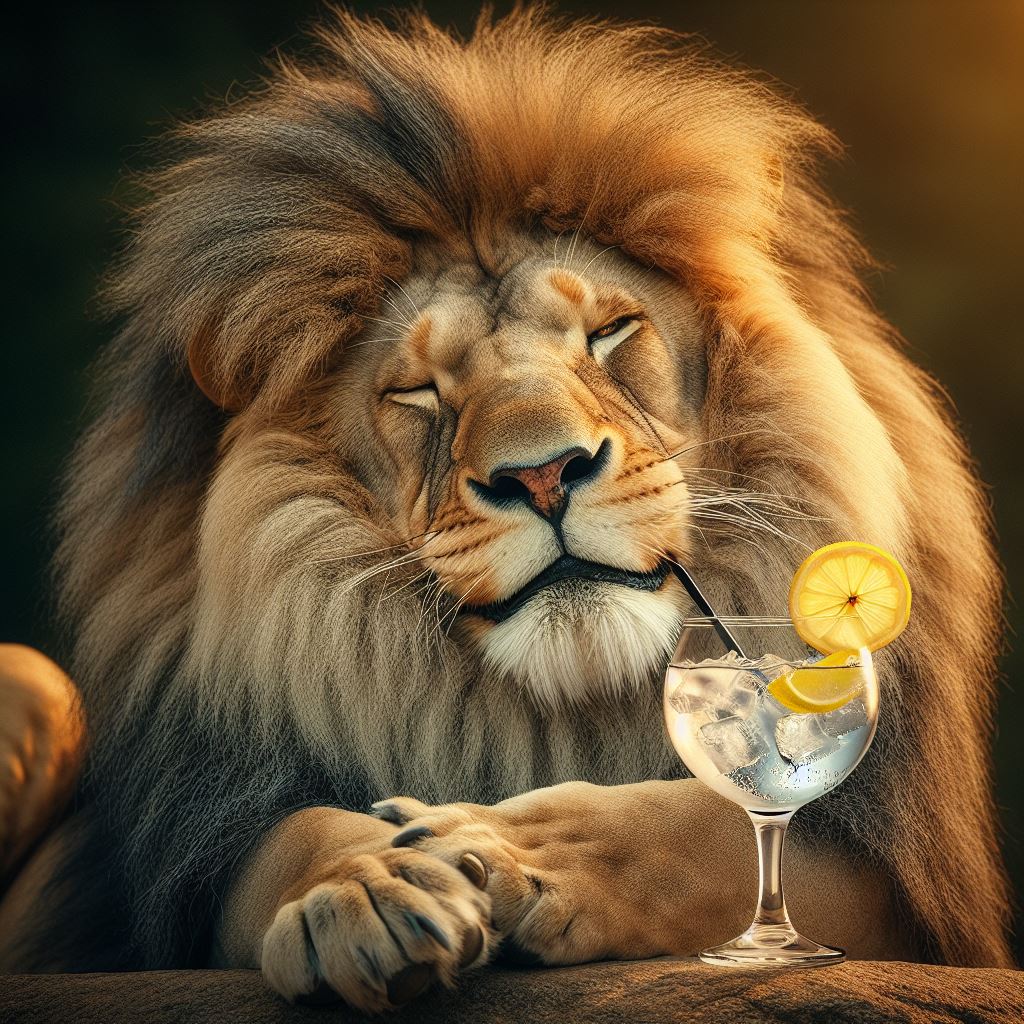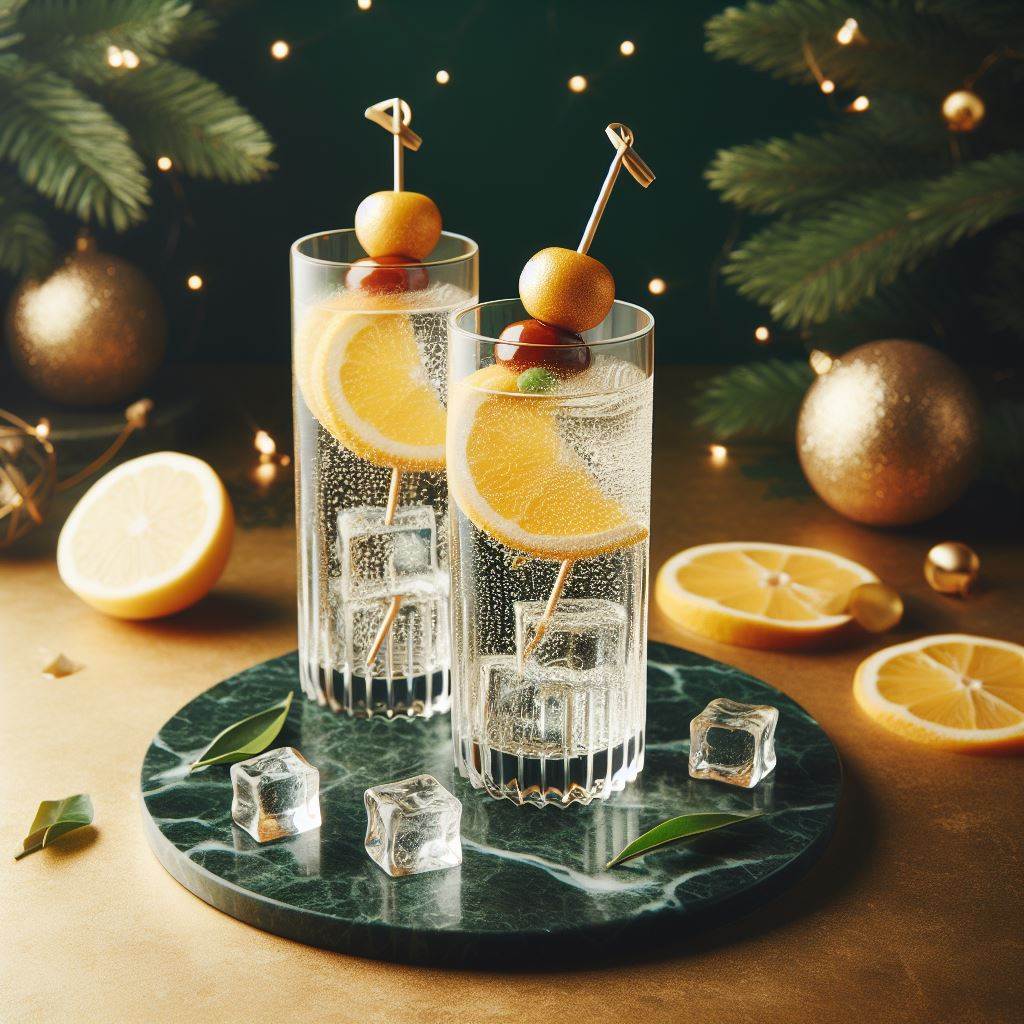
Summary
|
Step |
Description |
|
Ingredients |
|
|
How to Make |
|
History & Origin
The Gin and Tonic is not just a cocktail—it’s a slice of history. Originally crafted in the early 19th century, its roots are deeply entwined with the British Empire in India. British officers in the colonial Indian army began mixing quinine with water and sugar to prevent malaria, given that quinine was a known anti-malarial compound found in the bark of the cinchona tree. However, the bitter taste was unpleasant, leading them to add a splash of gin to make it more palatable. Thus, the Gin and Tonic was born—a perfect blend of necessity and leisure.
Ingredients
- 2 oz (60 ml) gin
- 4 oz (120 ml) tonic water
- Ice cubes
- Lime wedge, for garnish
How to Make the Perfect Gin and Tonic
Fill a Highball Glass
Start by filling a highball glass to the brim with large ice cubes. The more ice, the slower it melts, keeping your drink colder and less diluted.
Pour the Gin
Measure and pour the gin over the ice.
Add Tonic Water
Slowly pour the tonic water to maintain its fizz and gently stir to combine the gin and tonic.
Garnish
Squeeze a wedge of lime into the drink for a tart edge and drop it into the glass. Stir gently.
Serve Immediately
Enjoy your Gin and Tonic fresh and cold!
Expert Tips
Choose Your Gin Wisely
The type of gin you use can dramatically alter the taste of your Gin and Tonic. Experiment with different brands and styles to find your preference. London dry gin is the most common and traditional choice due to its clean, crisp botanical flavors which complement the tonic well. However, aromatic gins with distinct botanicals can add a unique twist to your cocktail.
At LiquorLores.com, we pride ourselves on providing well-researched recommendations for top-quality spirits, ensuring that our readers have access to the best possible selections for their cocktails. For gin enthusiasts, we’ve curated a list of exceptional brands, each with unique botanical blends and flavor profiles.
Gin Recommendations – LiquorLores
Gin Brand | Origin | Notable Botanicals |
Roku Gin | Japan | Sakura flower, yuzu peel, sencha tea, sansho pepper |
Bombay Sapphire | England | Juniper, lemon peel, coriander, almonds |
Hendrick’s Gin | Scotland | Rose, cucumber, juniper |
The Botanist | Scotland | 22 local botanicals including heather, mint |
Plymouth Gin | England | Juniper, coriander seed, cardamom pods |
Tanqueray No. Ten | England | Chamomile, grapefruit, lime, juniper |
Beefeater 24 | England | Japanese sencha, Chinese green tea, grapefruit |
Sipsmith London Dry | England | Juniper, lemon, orange, coriander |
Quality Tonic Water Matters
The tonic water can make or break your cocktail. Use a high-quality tonic that complements the gin. Tonic waters that are less sweet and more quinine-forward can enhance the botanicals in the gin rather than overpowering them.
At LiquorLores.com, we understand that the perfect Gin and Tonic is only as good as its components. That’s why we’ve carefully selected a list of premium tonic waters that will elevate your cocktail experience.
Tonic Water Recommendations – LiquorLores
Tonic Water Brand | Origin | Notable Features |
Fever-Tree | UK | Natural quinine, no artificial sweeteners |
Schweppes | Switzerland | High carbonation, contains quinine |
Fentimans | UK | Botanical brewing, herbal infusions |
Canada Dry | Canada | Less sweet, contains real quinine |
Thomas Henry | Germany | High carbonation, contains quinine |
Ratio Variations
The classic gin to tonic ratio is 1:2, but feel free to adjust according to your taste. Some prefer a stronger gin presence, while others may enjoy more tonic.
Experiment with Garnishes
While a wedge of lime is traditional, branching out to other garnishes can tailor your drink to your taste. Try a slice of cucumber, a sprig of rosemary, or a peel of grapefruit to add different aromatic dimensions.
Glassware Matters
A highball glass is traditionally used for a Gin and Tonic because it is tall, which helps maintain the carbonation and showcases the clarity and bubbles of the drink. At LiquorLores, Gin and Tonic is recommended in either highball or balloon glass.
Highball Glass
Balloon Glass


Temperature is Key
Always use plenty of ice to keep your drink cold and refreshing.
Explore with Bitters
Adding a few drops of bitters, such as aromatic or orange bitters, can introduce an additional layer of flavor and complexity.
At LiquorLores.com, we appreciate the profound impact that a few dashes of bitters can have on a cocktail, transforming it from ordinary to extraordinary.
Bitters Recommendations – LiquorLores
Bitters Brand | Origin | Notable Features |
Angostura | Trinidad and Tobago | Aromatic, made from herbs and spices |
Peychaud’s | USA | Lighter and sweeter than Angostura |
Regans’ Orange Bitters No. 6 | USA | Orange peel and spices |
Fee Brothers | USA | Wide variety including fruit flavors |
Use Fresh Ingredients
Always use fresh tonic water from a newly opened bottle to ensure it’s fizzy, and fresh lime or other citrus fruits for garnishing. Stale tonic or garnishes can detract from the overall quality of the drink.
The Gin and Tonic is more than just a cocktail; it’s a testament to the ingenious improvisation of the British during their time in India. It remains beloved worldwide for its simplicity, elegance, and refreshing taste. With just a few high-quality ingredients and the right techniques, you can elevate this straightforward drink into a sophisticated cocktail. Whether you’re unwinding on a hot day or hosting a gathering, the Gin and Tonic offers a crisp, satisfying sip every time. Cheers to a timeless classic!
How useful was this post?
Click on a star to rate it!
Average rating 0 / 5. Vote count: 0
No votes so far! Be the first to rate this post.

I have been struggling with this issue for a while and your post has provided me with much-needed guidance and clarity Thank you so much
Your posts always speak to me on a personal level and I believe that is a testament to your authenticity and genuine nature